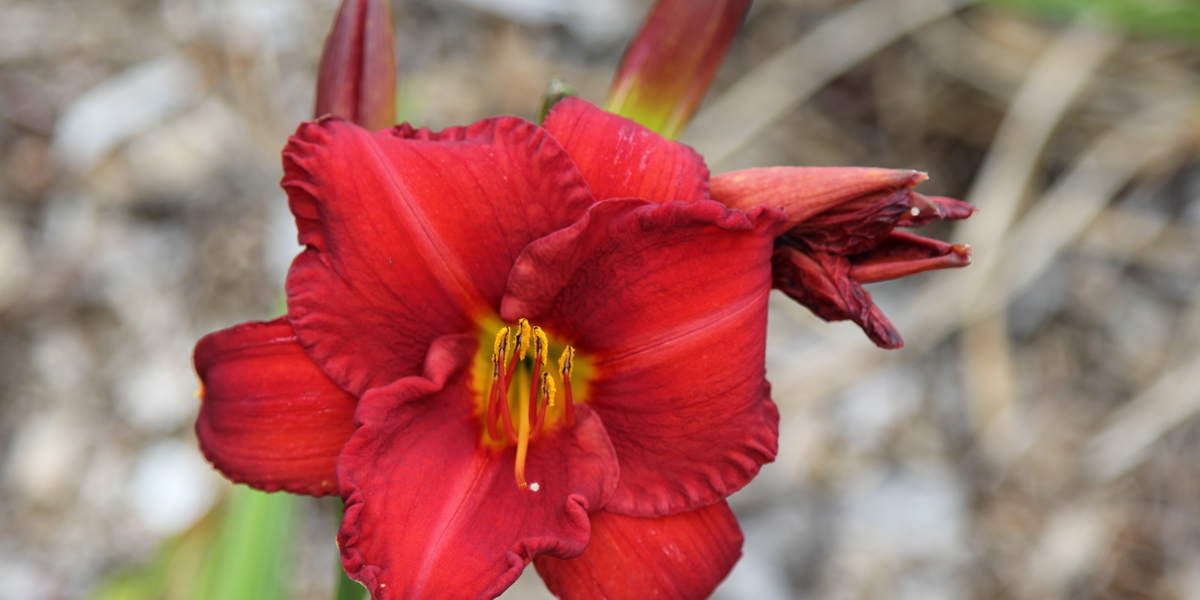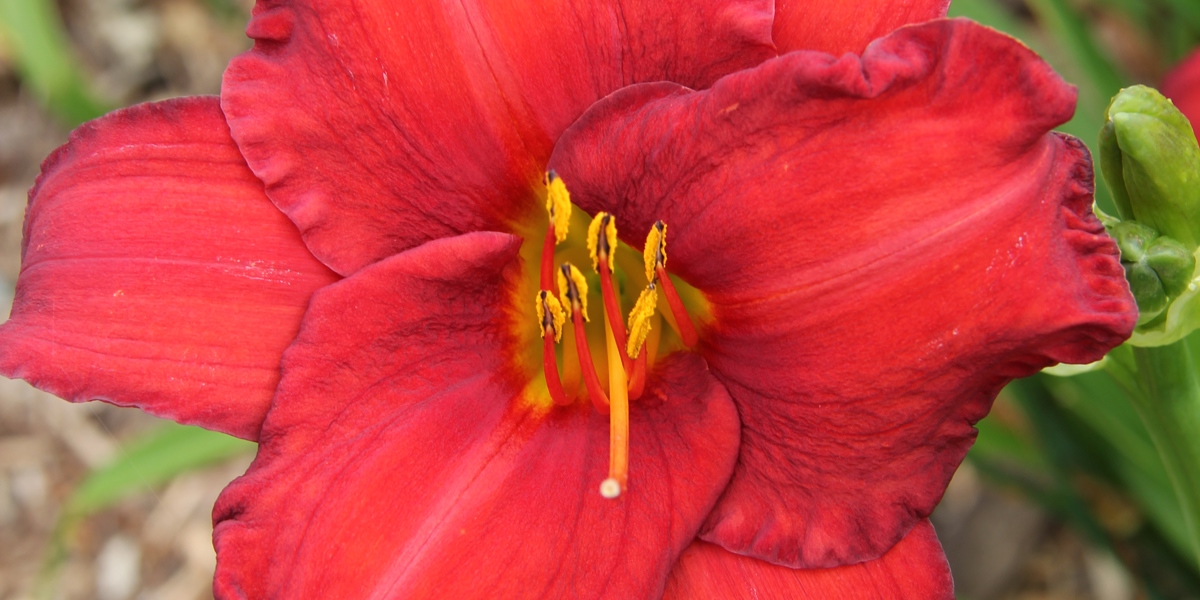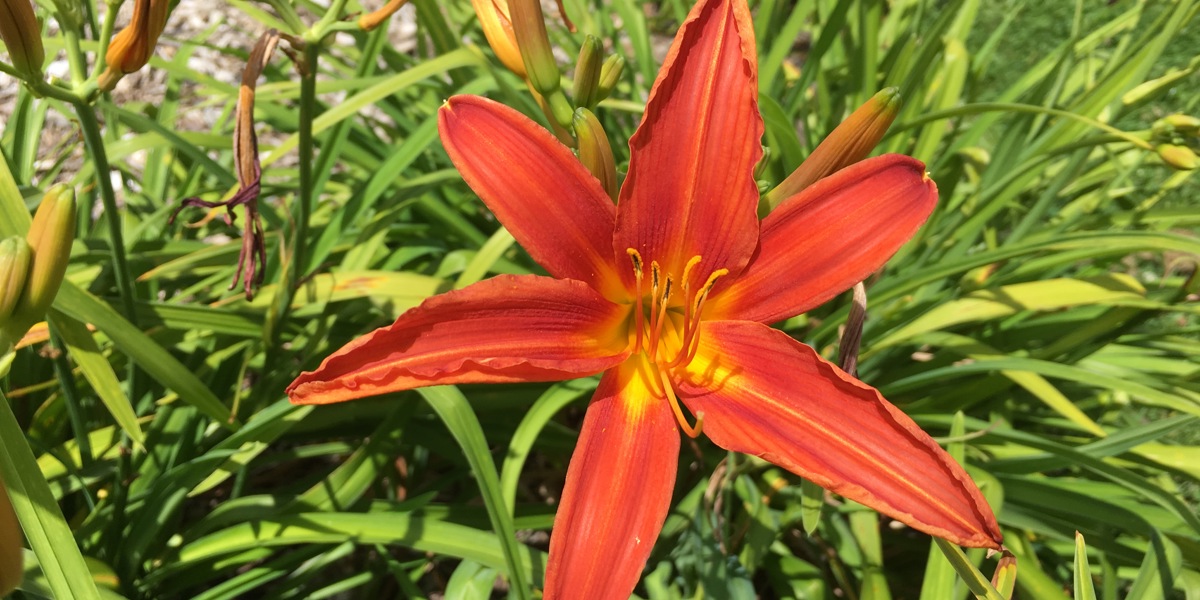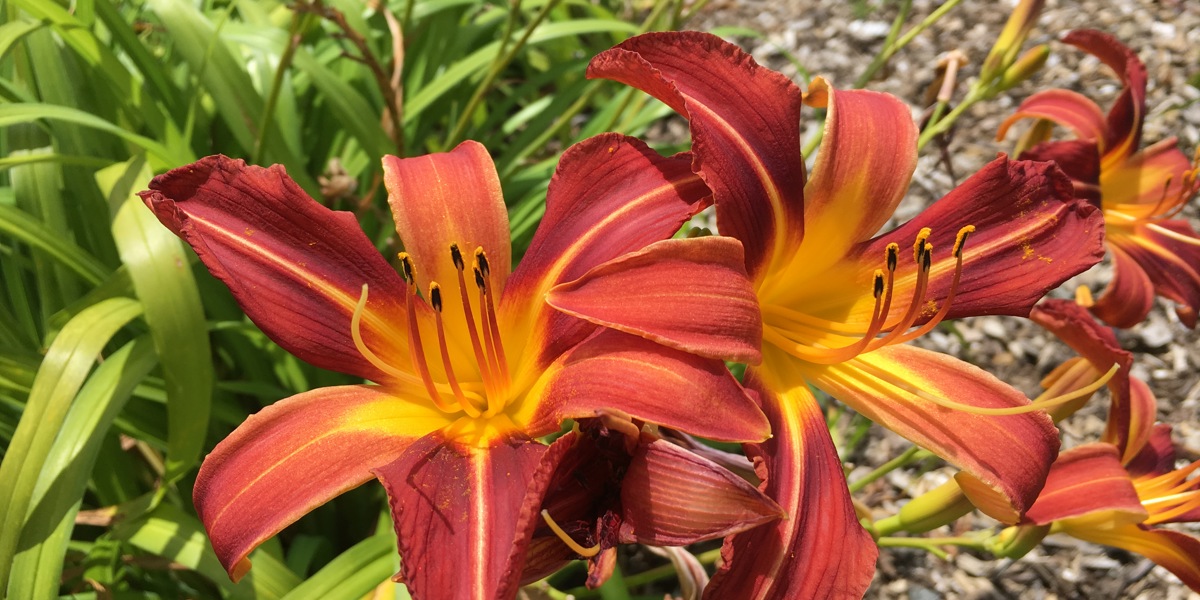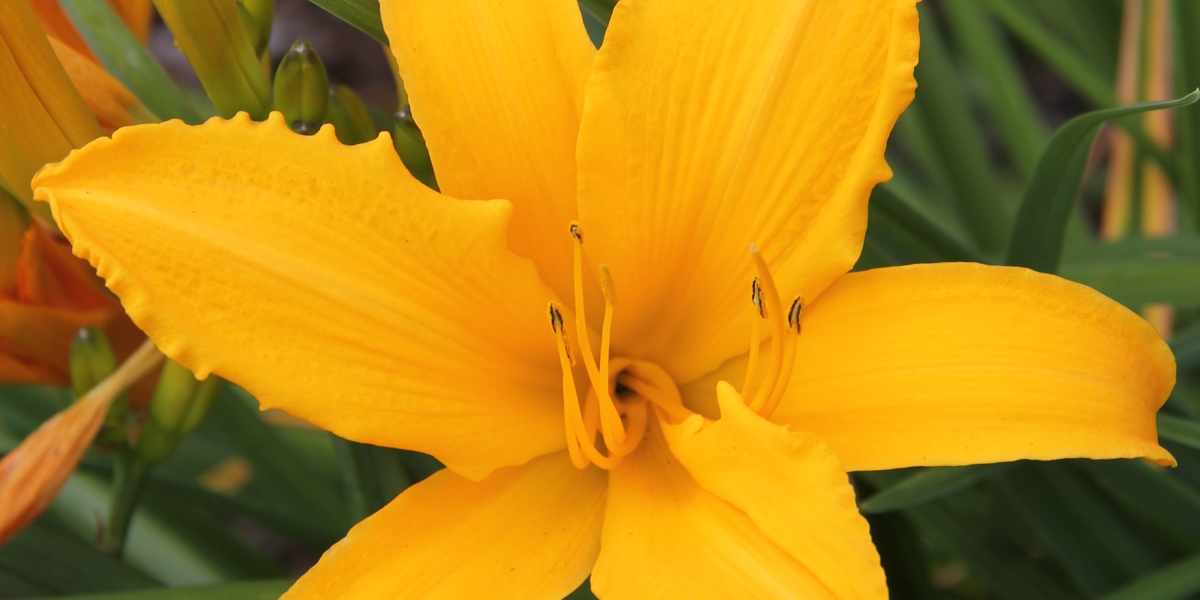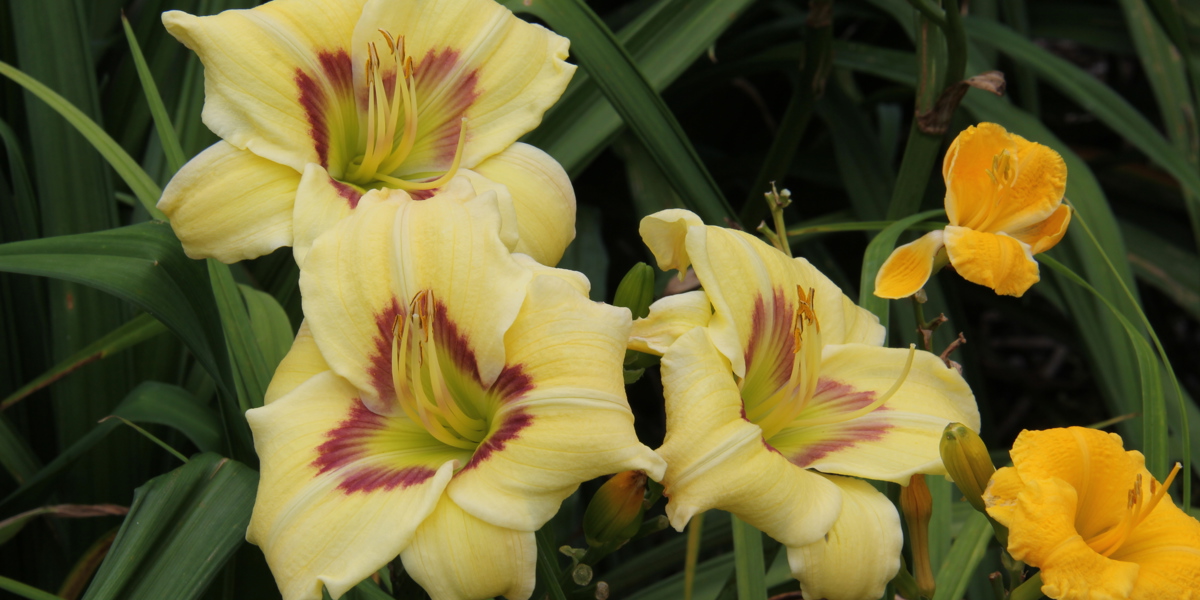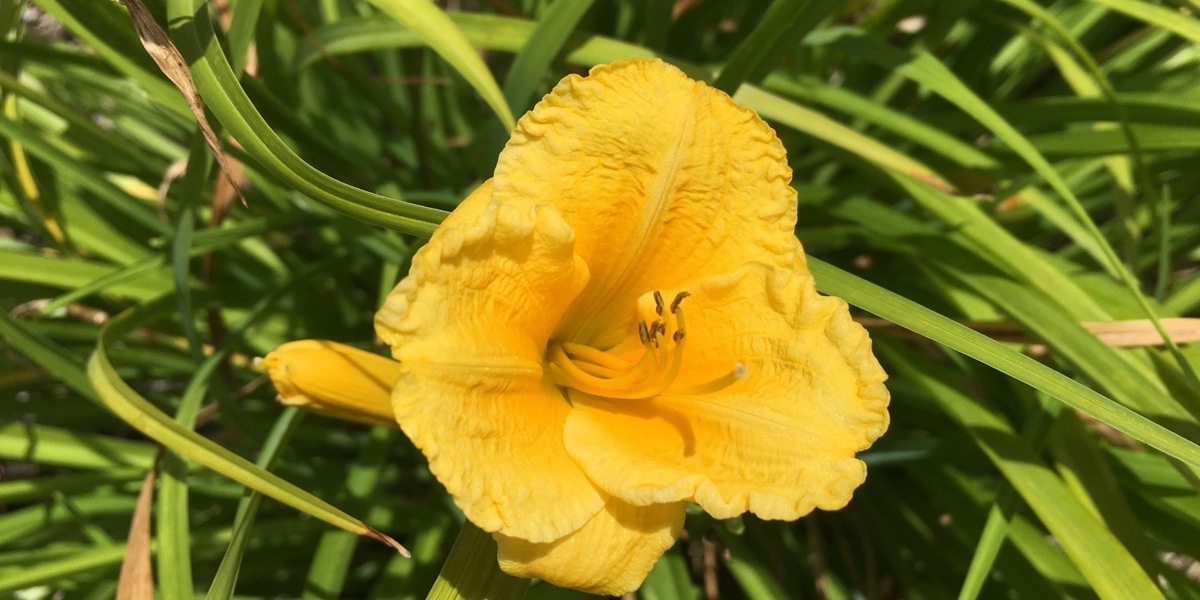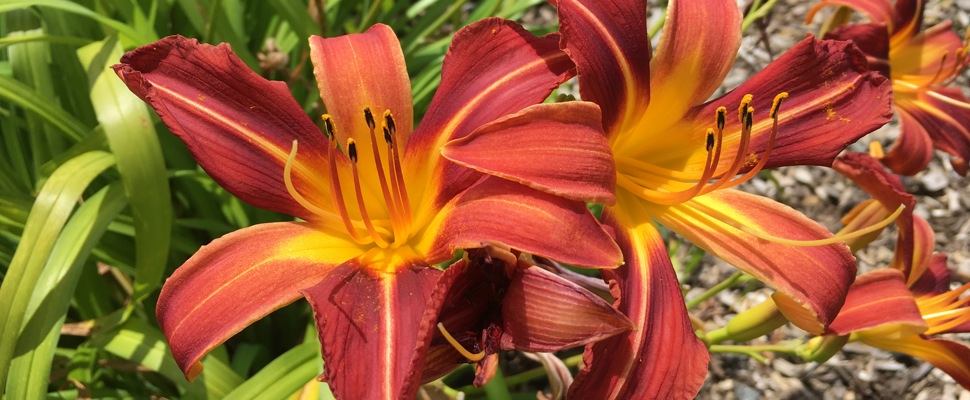
Finding rust resistant Hemerocallis for Auckland
Daylily trial stage 2
Introduction
Daylilies (Hemerocallis species and cultivars) can suffer severely from rust, Puccinia hemerocallidis, and this fungal pathogen is spreading worldwide. With more than 1,000 cultivars of Hemerocallis recorded in New Zealand, it is important to regularly assess those cultivars that are readily available in the market, including new introductions, and provide up-to-date information on the cultivars’ resistant to rust and therefore best suited to Auckland growing conditions. As with our other trials, results may be applicable to other regions of New Zealand.
This is the second trial of Hemerocallis that Auckland Botanic Gardens (ABG) has reported on to evaluate which cultivars are resistant to daylily rust. The aim of the latest trial was to re-evaluate top performing Hemerocallis for Auckland conditions which are rust resistant and profuse flowering. This trial has included several cultivars not formally trialled in the earlier ABG trial (Bodley et al., 2015). The top performers of the 2014 trial were included in this current trial for comparison when determining overall rating of performance. This trial will update the top 12 performers listed by Bodley et al. (2015) to ensure the best rust resistant daylilies assessed to date are recommended. The cultivars in this trial came from plants used in a breeding programme at ABG during 2014, initially selected for breeding based on international research. However, Auckland conditions differ to the USA and other countries; therefore ABG assessed the performance of these new cultivars specifically for Auckland conditions.
Methods
This trial commenced in April 2015 and was completed in January 2018. Three plants of each cultivar and of two Hemerocallis species were planted on the 23rd April 2015, except H. ‘Flaming Nora’ which was planted on the 3rd July 2015. Plants were not watered (as there were frequent summer showers), received full sun and were fertilised at the time of planting. Plants were all cut back to ground level in autumn. Weekly flowering records were kept along with recording the number of flowers produced in the first two years of the trial. Observations of plant habit and flower colour using the Royal Horticultural Society (RHS) colour charts were made during peak flowering. Percentage of each plant infected by rust was recorded weekly in the first two years, then monthly in the third year. Other pest and disease issues were noted as they were observed with the percentage of the plant affected recorded. At plant maturity, the height and width (cm) of foliage and height of flower spike was measured. Six evaluations with external horticultural experts took place during the trial period where an overall assessment and rating was given to each cultivar. The overall rating (1 = poor performer and 10 = excellent performer) was used to determine the list of top performers (Table 1). Cultivars that scored 8 or more were considered top performers and would be recommended for Auckland based on the results of these trials. These methods are similar to those followed in our previous Hemerocallis trial (Bodley et al., 2015).
Results
Hemerocallis ‘Study in Scarlet’ was removed in March 2016 because it was heavily infected with rust with almost the entire plant covered in rust. H. “Great Barrier yellow form” was collected from a garden on Great Barrier Island, New Zealand, and looked to have promise, however it was removed in May 2016 because it was not resistant to rust under Auckland conditions and was a poor overall performer.
Plants of H. ’Oriental Ruby’ and H. ’Oriental Beauty’ were initially included in the trial, however they looked identical and further identification determined they were both H. ’Oriental Ruby’.
The cultivar in this trial named H. cf. ‘Monet’s Garden’ is in fact not correctly named but similar to one seen at Monet’s Garden in France. However the true name of this cultivar in the trial was unable to be determined. This plant might also be better suited to shady areas as in other gardens it has been seen doing better in some shade than in the open sunny site of the trial garden at ABG.
Despite producing impressive floral displays H. ’Dancing Dwarf’, H. ’Mini Pearl’, H. cf. ‘Monet’s Garden’ (incorrectly named), and H. ’Pixie Parasol’ were marked down in their overall ratings because their foliage becomes untidy and unattractive after flowering. These cultivars were not consistent throughout the year in their overall performance, particularly in relation to foliage.
H. ‘Glitter’ has sustained performance throughout the season with attractive foliage even after flowering has finished.
Hemerocallis lilioasphodelus (syn. H. flava) doesn’t have a lot of flowers despite the very clean and tidy foliage.
In June 2017, we noticed many Hemerocallis put out new flower buds only to have them washed off with the extremely heavy rain. Some of the flower buds also became infested with aphids. During autumn, some aphids were noticed on almost all the plants; however the infestations (number of insects per plant) were very low and unlikely to have impacted the plants performance.
Top five cultivars ranked in order of greatest number of flowers:
H. ‘Baby Betsy’
H. ‘Mini Pearl’
H. ‘Dancing Dwarf’
H. ‘Pandora’s Box’
H. ‘Nashville’
Table 1 Results of the 29 previous best and new Hemerocallis cultivars trialled at Auckland Botanic Gardens. Information includes flowering period, flower colour using RHS colour chart, habit, plant size, resistance to rust and overall rating. Flower position is described where the flowers are held above (A), below (B), or level (L) with the foliage.
|
Hemerocallis species and cultivar |
Flowering period and flower colour |
Flower position |
Habit, height × width of foliage × height of flower (cm) |
Average percentage of rust (%) |
Overall rating |
|
H. ‘Baby Betsy’ |
Nov to Dec. |
A/L |
Deciduous. |
9.2 |
7 |
|
H. ‘Cade Stewart’ |
Dec to March, June to July. |
A |
Evergreen. |
6.6 |
9 |
|
H. ‘Chicago Apache’ |
Nov to Feb. |
A |
Semi-deciduous. |
6.7 |
8 |
|
H. ‘Chosen One’ |
Nov to June. |
A |
Evergreen. |
5.4 |
7 |
|
H. ‘Dancing Dwarf’ |
Oct to Feb. |
A |
Deciduous. |
3.7 |
7 |
|
H. ‘Flaming Nora’ |
Oct to March, May to June. |
A |
Evergreen. |
13.6 |
6 |
|
H. fulva |
Nov to March. |
A |
Evergreen. |
6 |
8 |
|
H. ‘Glitter’ |
Dec to Jan. May to June. |
A |
Deciduous. |
3.5 |
8 |
|
H. “Great Barrier yellow form” |
Oct to Dec. May to June. |
- |
Evergreen. |
6 |
5 |
|
H. ‘Green Flutter’ |
Nov to Dec. |
A/L |
Deciduous. |
10.1 |
7 |
|
H. lilioasphodelus |
Nov to Dec. Feb to July. |
A |
Evergreen. |
2.6 |
7 |
|
H. ‘Little Grapette’ |
Nov to Dec. |
A |
Deciduous. |
14.7 |
5 |
|
H. ‘Lullaby Baby’ |
Oct to Dec. |
A/B |
Deciduous. |
5.1 |
7 |
|
H. ‘Memories’ |
Oct to Jan. |
A |
Evergreen. |
11.2 |
6 |
|
H. ‘Mini Pearl’ |
Nov to May. |
A/B |
Deciduous. |
6.6 |
7 |
|
H. cf. ‘Monet’s Garden’ |
Nov to Jan. |
A |
Deciduous. |
7.9 |
6 |
|
H. ‘Moon Goddess’ |
Dec to Jan. |
A |
Deciduous. |
17.5 |
6 |
|
H. ‘My Peggy’ |
Nov to Dec. March to May. |
A |
Evergreen. |
8.1 |
7 |
|
H. ‘Nashville’ |
Nov to June. |
A |
Evergreen. |
6.5 |
8 |
|
H. ‘Oriental Ruby’ |
Nov to May. |
A |
Semi-evergreen. |
20 |
6 |
|
H. ‘Pandora’s Box’ |
Nov to Jan. |
A/B/L |
Deciduous. |
8.5 |
7 |
|
H. ‘Peek-A-Boo Eyes’ |
Nov to June. |
A/L |
Evergreen. |
9.2 |
8 |
|
H. ‘Pixie Parasol’ |
Nov to June. |
L |
Deciduous. |
10.3 |
5 |
|
H. ‘Raspberry Wine’ |
Nov to Jan. |
A |
Deciduous. |
8.8 |
6 |
|
H. ‘Rose Emily’ |
Nov to Jan. |
A/L |
Deciduous. |
10.2 |
7 |
|
H. ‘Squeaky’ |
Nov to May. |
A/B/L |
Semi-evergreen. |
4.1 |
9 |
|
H. ‘Stella Bella’ |
Oct to May. |
A/L |
Evergreen. |
11 |
6 |
|
H. ‘Stella d’Oro’ |
Nov to May. |
A/B/L |
Deciduous. |
8.3 |
7 |
|
H. ‘Study in Scarlet’ |
Oct. March to April. |
– |
Not recorded. |
34.6 |
1 |
Conclusions
The star performers (a top 7), recommended on the basis of this trial and updating previous information from the 2014 ABG Hemerocallis trial are:
H. ’Cade Stewart’
H. ’Chicago Apache’
H. fulva
H. ’Glitter’
H. ’Nashville’
H. ’Peek-a-Boo Eyes’
H. ’Squeaky’
These scored an 8 or higher in our evaluations, have less than an average of 10% rust infection and long flowering periods with an abundance of flowers.
There were some changes between the star performers recommended between this trial and the previously published article (Bodley et al., 2015). For example, this time H. ‘Little Grapette’ showed high levels of rust infection that did not satisfy our assessment criteria and was therefore rated low. Some of the other recommended cultivars from the 2015 daylily trial including H. ‘Mini Pearl’, H. ‘Moon Goddess’ and H. ‘Rose Emily’ scored lower in this updated trial because although the flowering was prolific and sustained, the foliage was variable throughout the season and at times was untidy. They might be used in displays but require more frequent maintenance than those star performers in the updated (2018) list. It is not uncommon for newly assessed cultivars to supersede the performance of older ones, hence reinforcing the importance of regular and ongoing evaluations of plants.
Acknowledgements
We would like to thank Terry Hatch, Lindsey Hatch and Fiona MacDonald for helping evaluate the plants in this trial.
References
Bodley, E.; Green, R.; Jones, J.; Hobbs, J. (2015). Auckland Botanic Gardens Hemerocallis rust trial. New Zealand Garden Journal 18(2): 2–4.
The American Hemerocallis Society online daylily database
This article cannot be republished elsewhere without consent from Auckland Botanic Gardens.
